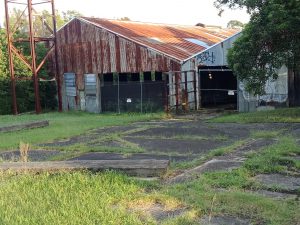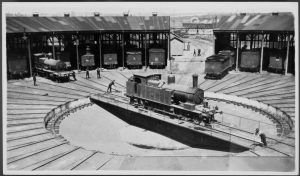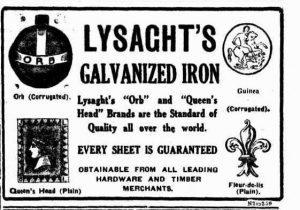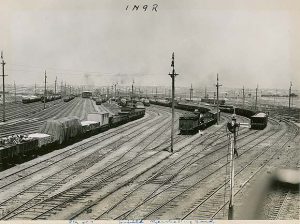The Enfield Tarpaulin Factory

The Enfield Tarpaulin Factory, Cosgrove Road, April 2021. Courtesy Strathfield Council
The Enfield Tarpaulin Factory in Cosgrove Road has recently been added to the National Trust Register. Formerly located at the Sydney Yards, the cast and wrought iron buildings were moved to the Enfield Marshalling Yards with the decentralisation of goods traffic and the electrification of the railways during the early 1920s. Originally constructed in 1892, the two buildings had operated as the Hay and Transhipping Sheds for the Sydney Yards.

The Enfield Marshalling Yards. Courtesy National Library of Australia
By the 1920s the Enfield Marshalling Yards were the main site for the assembly of train carriages and engines in Sydney. The building is significant as an example of iron manufacturing in Sydney during the late 19th Century. A large, two-bay rectangular building, its walls are clad with corrugated, galvanised steel sheeting, as is its roof. The walls are stamped with the Lysaght’s Orb brand. The cast iron columns were manuafactured by Pope Maher & German of Darlington Ironworks.

Observer (Adelaide) 30 January 1926 p.6
https://trove.nla.gov.au/newspaper/article/166331500
The factory operated in Enfield between 1925 and 1991, producing and repairing tarpaulins to cover open ‘S’ truck wagons, to protect their contents from the ravages of rain, wind, sun and dust. During the late 1930s, 5000 tarpaulins were manufactured and 25,000 repaired annually. In the Wax Dressing Room, wax was melted to be applied to the cloth of the tarpaulins to assist with waterproofing. This building had also been relocated from the Sydney Yards where it had served as a fireproof tarpaulin store.

Railway marshalling yards, Enfield. Courtesy State Archives & Records NSW
During World War II the range of items produced at the factory increased significantly. Canvas items for the military effort, including tents and stretchers, were produced along with circular canvas water tanks capable of holding over 5500 litres. These tanks were used in the North African campaigns of the Allied forces. The sewing skills of the female staff were also put to good use. Additional staff were employed and new machinery was installed. Staff numbers peaked in 1944 when there were 88 employees.
Among the other items produced for the war effort was a hospital marquee, invented onsite. Measuring six metres by 15 metres, it could be used as an emergency field hospital. The factory also supplied ropes, haversacks, kit bags and gun covers for the military, as well as tarpaulins. A night shift was added to manage the workload.
After the war the focus of production returned to railway requirements. During the 1950s and 1960s the factory was responsible for the production of a large number of tents for the railways. Many of these were constructed on railway land at Chullora to provide temporary accommodation for the new workers at the Chullora Railway Workshops.
During the 1980s the railway’s open trucks were gradually replaced with closed containers and the tarpaulins were no longer in such demand. Other items, such as tool bags, mail bags, sheets, aprons and ropes were produced and tarpaulins were made available for hire. By 1990, only 600 tarpaulins were manufactured each year with about 1100 also being repaired.
The factory closed on 12 April 1991.
by J.J. MacRitchie
Local Studies Advisor
References
Godden Mackay (1991) Enfield Tarpaulin Factory: history, operations and building fabric http://heritagensw.intersearch.com.au/heritagenswjspui/bitstream/1/9720/1/H14468%20-%20ENFI.pdf
National Trust Register Listing Report
